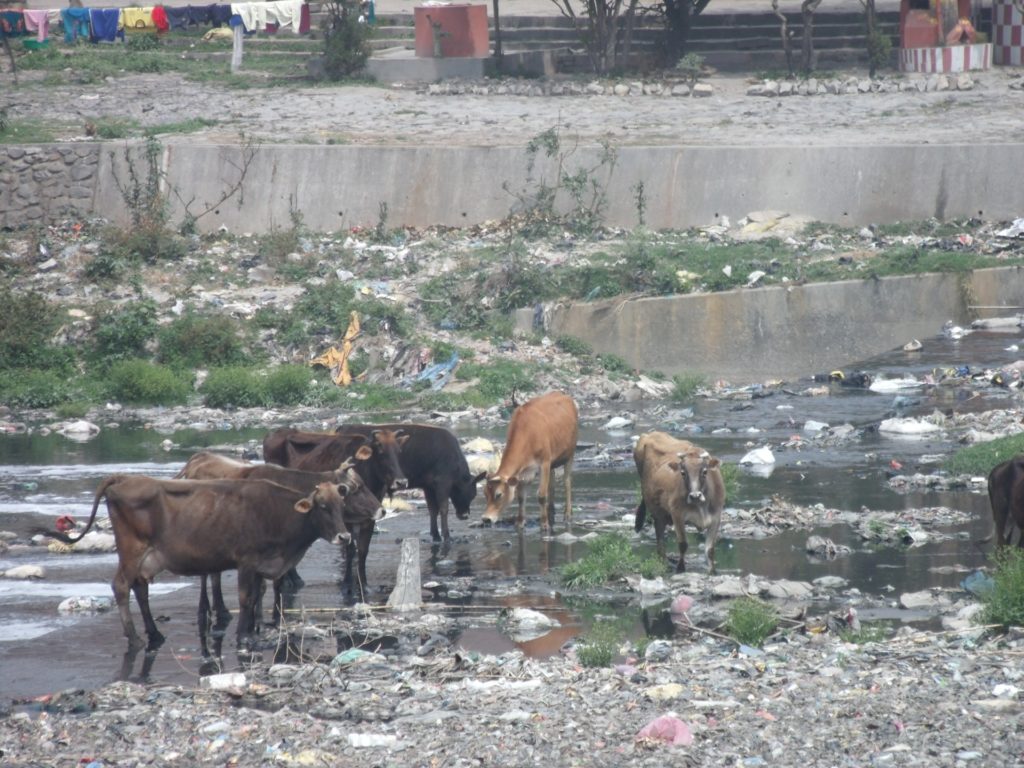Isn’t it a shame that most of our plastic is burned or ends up in the ocean, while we could use it just like diesel or gasoline, as fuel? The growing waste mountain is barely felt in Europe or the US, but in many Asian and African countries it has become a pressing environmental and health issue a long time ago. This is also because Europe and the US are exporting a big share of their unsorted plastic waste to these countries. With pyrolysis, local communities can utilize plastic waste, stopping the waste piling up further.

While there are other technologies that convert waste plastic to useful products, pyrolysis is arguably the simplest one of them. It also has several advantages over incineration with energy recovery. In addition, it is easily scalable as we show with this project and allows for a decentralized application. Especially in the context of a lacking waste management and recycling infrastructure, we think that pyrolysis is a good option.
But also in a more broad context, pyrolysis as a way to chemically recycle plastic is advantageous over classical recycling via simple melting and re-extruding, incineration with energy recovery and landfills.
Incineration with energy recovery
Burning plastic waste sounds like a very simple option and even better, if we can recover energy while doing it. However, anyone that has seen plastic burn knows that it is a very nauseating process. When plastic burns it releases a lot of toxic fumes, the most notorious of them being dioxin. That is why incineration facilities include rather complicated and expensive gas cleaning infrastructure, not available in every country. In some countries, plastic is burned for cooking, which is detrimental for the health of the people living there.
Landfills
While burying the plastic waste has the advantage that no further green house gasses (i.e. CO2) are emitted from the plastic as is the case during incineration, it is not that easy to do in a way that does not harm the environment and health of nearby communities. Rainwater can leach toxic compounds into the groundwater and gas formation from composting waste is suspected to cause cancer. There are strict regulations to follow, which makes landfilling expensive. In addition, instead of using plastic as a resource to replace crude oil, it is buried and lost. As extraction and transport of crude oil requires a lot of energy, this form of recycling could save on CO2 emissions.
Don’t we already recycle?
At the moment, worldwide only 12 % of plastics worldwide is collected for recycling and the fraction actually recycled is much lower. This is mainly because classical recycling methods, simply melting the plastic and reshaping it, are not sufficient to leads to degraded plastic properties. It is usually used for products like flower pots or park benches and can not be utilized for most consumer applications.
Plastic recycling and its challenges
Plastics are made up of polymers, long molecules that are produced by connecting a lot of monomers into a chain, called polymer.
The choice of monomer is the main lever to tune the plastic properties. This enables the vast variety of applications from hard-to-tear ropes to easy-to-tear food-packaging, from soft fabric to (hopefully) indestructible iPhone covers. However, even plastics made with the same monomer can have very different properties. By tuning the length and the alignment of the polymer chains chains almost all desired plastic properties can be achieved. Small amounts of additives can be used to further tweak or add properties such as color, UV protection, flame-resistance, or softening.
This intricate science has been developed over the last century and each company holds on to their secret recipes. Therefore no collection and sorting can guarantee uniform input for recycling. On top of that, contaminants from the use of these products cause additional contamination.
With this in mind, it is obvious, that just melting and re-extruding plastics, produces material of unknown and varying quality. This can only really be used in items where these properties do not matter that much, such as park benches or outdoor tiling. This excludes all use that requires any stringent certification, such as indoor-use, food-contact, or safety-relevant applications.